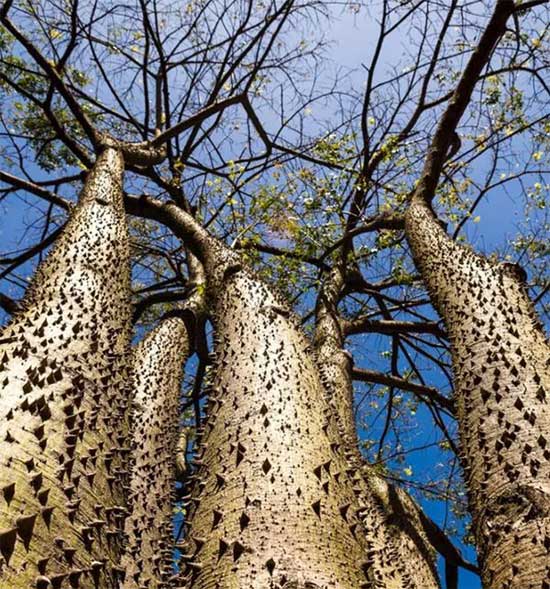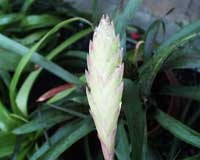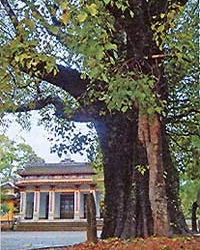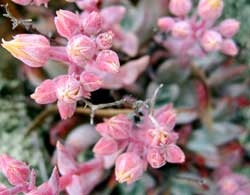The Vong Dong Tree: A Dangerous Plant is easily recognizable by its appearance as a hazardous species. It is known to be one of the five most toxic plants in the world.
Regarded as one of the most dangerous plants globally, the Vong Dong tree (Hura crepitans) is not suitable for ornamental gardening or shade provision. Its distinctive appearance, marked by a trunk covered in large, sharp thorns, makes it easy to identify as a hazardous species. Consequently, it is also referred to as “the monkey tree”.

Vong Dong Tree.
The Vong Dong (Hura crepitans), also known as the monkey tree or the West Indian locust tree, is a native species from South America. This tree produces large, hard fruits composed of about 15-20 rounded segments, with seeds resembling bird eyes and covered with a layer of fuzz.
The tree can reach heights of up to 40 meters, with a trunk circumference of 1 meter in its natural habitat, making it one of the largest trees in tropical America. Its trunk is covered with dark, cone-shaped thorns and has a gray bark.
The thorny bark of the Vong Dong tree serves as a formidable defense mechanism, often compared to medieval torture devices. The thorn tips, which are about 1.2 cm wide, are sharp and needle-like. The dense coverage of thorns from top to bottom forms an impenetrable armor.

The trunk surface is covered with dark, cone-shaped thorns.
The Vong Dong tree produces both male and female flowers. The male flowers are unisexual, red, and lack petals, growing in clusters about 5 cm long, while the female flowers are solitary, brownish-red, and located in the leaf axils. The Vong Dong fruit measures approximately 3-5 cm in length and 5-8 cm in width, turning reddish-brown when ripe and containing flat seeds about 2 cm wide, surrounded by roughly 10 segments.
The fruit of the Vong Dong tree resembles a small pumpkin but is significantly smaller (about the size of a fist). Once it reaches the necessary ripeness, the fruit can explode into pieces to disperse its seeds, accompanied by a loud noise. It is known that the force from such an explosion can launch seeds over 14 meters at a speed of 70 meters per second. Naturally, any unfortunate animals within the seed’s trajectory can sustain injuries.


Fruit of the Vong Dong Tree.
Not only can the explosions cause physical injuries, but the fruit of the Vong Dong tree is toxic, leading to symptoms such as vomiting, diarrhea, and cramps if ingested. The red sap of the tree is known to cause rashes and can potentially lead to blindness if it comes into contact with the eyes. Indigenous peoples utilize the sap to create poisoned darts.
The Vong Dong tree is one of the 14 common causes of plant contact dermatitis in the Dominican Republic. Indigenous people from Central and South America use the dried bark, seeds, and thorns to craft jewelry; thus, if not handled properly, parts of the wood could cause dermatitis when fashioned into bracelets and necklaces.
The tree’s sap is also a toxin that can create irritating rashes upon skin contact. If the sap gets into the eyes, it can cause temporary blindness. Residents of Java, Indonesia, often use the tree’s sap as an insecticide, while Brazilians have used decoctions from the bark for strong purgative effects. Similarly, in Congo, the seeds of the tree are also used as a purgative.
Despite its toxicity, parts of the Vong Dong tree have been used for medicinal purposes and in various other fields. However, experts strongly advise against attempting any treatments with this plant without professional supervision.
- “Mini Watermelons” Growing Wild: Experts Warn Against Letting Children Near!
- Unraveling the Horrific Toxicity of the “Suicide Tree”: A Species Thriving Along the Coast
- Watermelons Growing in the Desert: Experts Warn: Don’t Touch Even If Thirsty
- Fear of the Deadly Plant in Vietnam That Can Kill in 7 Steps
- Admiring the ‘Queen of Poison’ Flower of Vietnam





















































